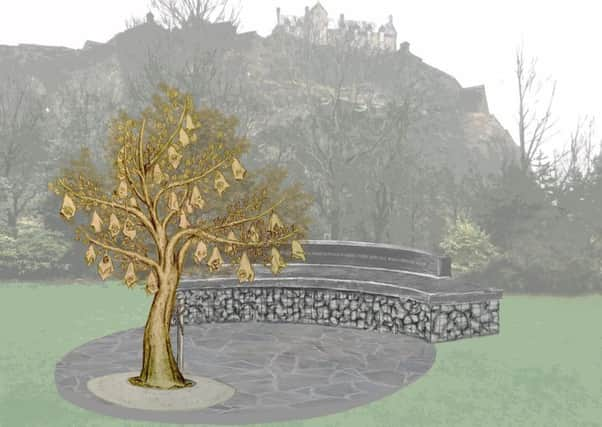'˜Handkerchief' tree to honour war objectors in Edinburgh


The memorial will pay tribute to First World War conscientious objectors (COs) who paved the way for the wider peace movement that exists today.
Organisers hope the finished sculpture will be installed by April next year – the centenary of the end of the war for jailed COs who were kept in prison until April 1919.
Advertisement
Hide AdAdvertisement
Hide AdAbout 30 artists from around the world, including the United States and Spain, expressed an interest when the competition for the memorial was launched.
Four were shortlisted to produce designs, which were then judged by a panel including peace campaigners, academics and descendants of conscientious objectors.
The winning design by Edinburgh artist Kate Ive is based on the “handkerchief tree” – so named because of its large white leaves that flutter in the wind. Soldiers during the First World War sent handkerchiefs as mementoes to loved ones and received them as reminders of home.
The design also refers to an assembly of the No Conscription Fellowship in 1916 where the 2000-strong audience waved handkerchiefs rather than applauded to avoid angering an aggressive crowd outside.
Advertisement
Hide AdAdvertisement
Hide AdThe tree sculpture will be covered in bronze embroidered handkerchiefs, each showing a different aspect of conscientious objection and opposition to war. They will also have seed pods made of small pieces of granite from Dyce quarry in Aberdeenshire where conscientious objectors were forced to do hard labour.
And there will be a granite-topped bench as part of the memorial so people can sit and reflect.
Brian Larkin, co-ordinator of the Edinburgh Peace and Justice Centre, said: “Those who refused to fight and who opposed the First World War should be remembered.
“Britain was the first country to establish a right to conscientious objection in the Military Service Act 1916, but only a few COs were granted exemption. Thousands of men went to prison for refusing conscription. They endured harsh conditions, hard labour, mistreatment and even force feeding in prison.
Advertisement
Hide AdAdvertisement
Hide Ad“Their principled resistance is an important part of our history that suggests the possibility of alternatives to war through peace building and conflict resolution.”
Mr Larkin noted Edinburgh had 37 war memorials – eight of them in Princes Street Gardens. “It’s a perfect setting for a memorial that questions the prevailing view that war is necessary and even good,” he said.
Mr Larkin said Ms Ive’s design was in contrast to traditional war memorials. “They usually put a heroic figure on a plinth to be looked up to,” he said. “This is ground level and invites people to come into its space for reflection.”
A crowd-funding appeal is due to be launched next month in a bid to raise around £100,000 within the next six months to pay for the next phase of the project.